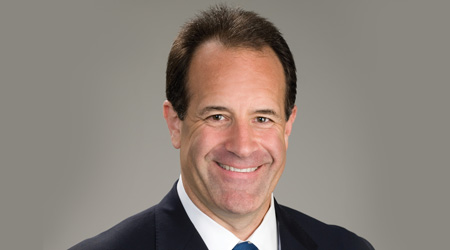
Senior leadership invariably wants to hire better salespeople. It begs the question — better than what? Better than the existing salesforce? Better than the competition? Better than the top five percent of all salespeople?
Upgrading sales talent requires a clear picture of what it will take to succeed in your company, selling your product or services, to your customers, in your industry. Once you know what you are looking for, you'll need a selection process.
Leaders often tell us they “know what it takes to succeed in their industry.” If you agree, why do you have under-performers? The belief that you know sales talent when you see it is based on five widely held misconceptions about sales success — findings that are supported by our research into over 2.2 million salespeople:
Misconception 1: There is a Sales Personality. The data conclusively shows that personality is not a differentiator between the top and bottom salespeople. There is no sales personality. That is one reason personality tests don't predict sales success. If a personality predicted success, hiring salespeople would be a snap. How many salespeople with great personalities have you seen who consistently fail to make their numbers?
Misconception 2: Friendliness Sells. The Relationship Building Core Competency, in part, measures how likable a salesperson is. Top salespeople are no more likable than their weak peers. Being likable is a prerequisite for sales success, however, it does not guarantee results. While you can't sell without it, it's simply not enough to ensure success. There are millions of likable people who can't sell candy to rich kids.
Misconception 3: Great Salespeople are Extroverted. This finding is contrary to the stereotypical image of a salesperson. Science shows that extroverted salespeople perform no better than introverted salespeople. On the contrary, introverts have an edge in listening and asking questions.
Misconception 4: Presenting is Key. Most salespeople achieve their highest scores in the Sales Core Competency, Presentation Approach, and there isn't much difference between the tops and bottoms at most companies. Surprisingly, the bottom salespeople are often better than the top salespeople at Presentation Approach because they rely on that instead of a Consultative approach.
Misconception 5: Always be Closing. Most leaders are obsessed with closing. A misconception that stems from an outdated view of the sales process. Objective Management Group science shows that most salespeople are uniformly weak at closing. In most companies, the closing competency cannot differentiate top from bottom.
How can you predict sales success? Begin by shedding your misconceptions and focusing on the 21 core competencies required to succeed in sales. The core competencies are measurable. The relative weight of each competency needed to succeed in your industry will vary based on your product or service, your go-to-market strategy, and the difficulty of the sales role. Your goal should be to build a competency model that is 92 percent accurate in predicting sales success.
Jim Peduto is the Managing Partner and the co-founder of Knowledgeworx, LLC. Owners and CEOs rely on Jim's strategic thinking and transformational growth expertise to win market share and achieve performance gains.

 The Down and Dirty on Cleaning in Virus Season
The Down and Dirty on Cleaning in Virus Season How Surfactant Use is Expanding in Commercial Cleaning
How Surfactant Use is Expanding in Commercial Cleaning Operational Excellence Series 2025: Better Budgeting
Operational Excellence Series 2025: Better Budgeting